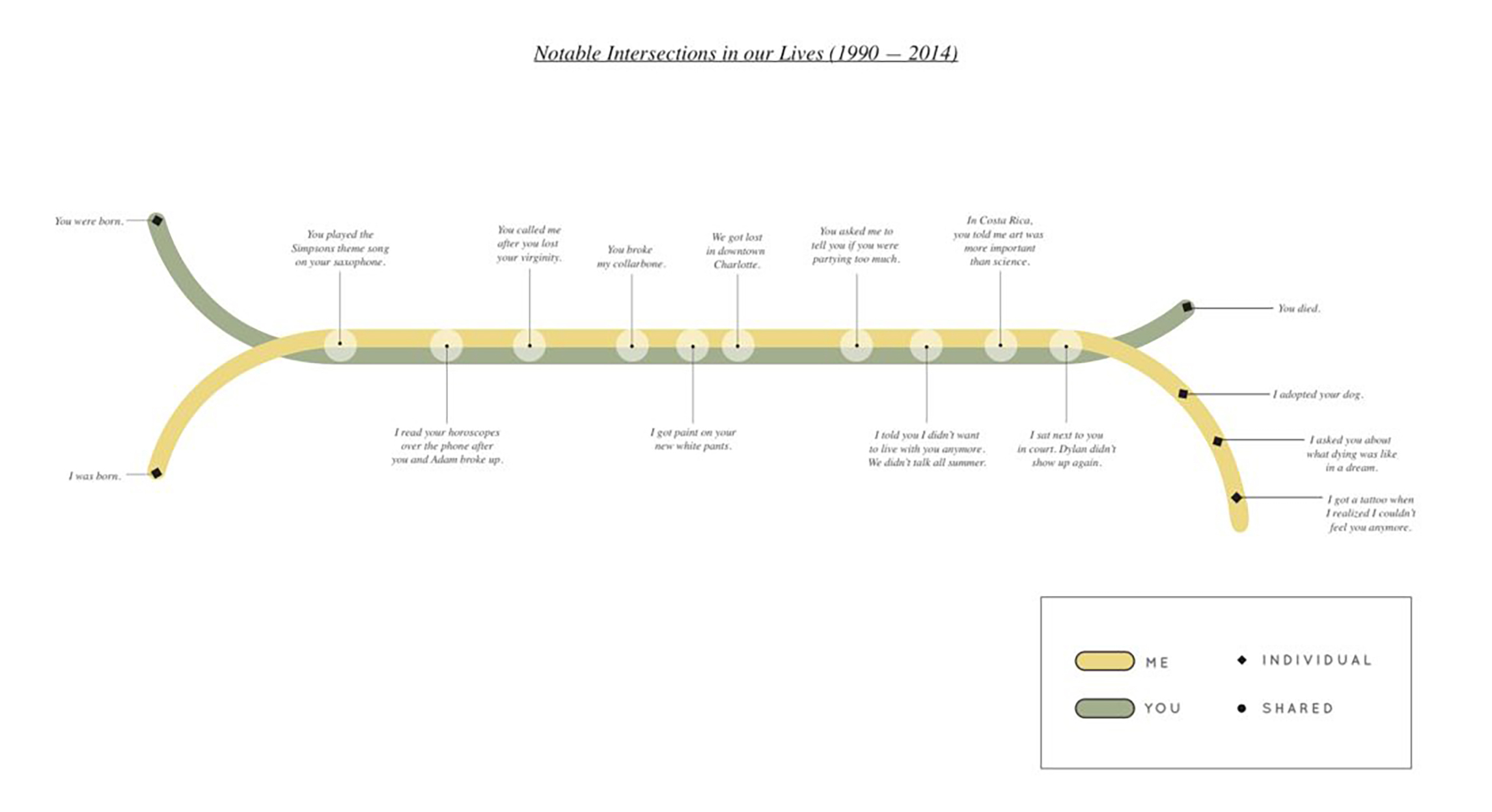Coping Mechanisms + Visual Metaphor
I recently came across a website from an alum of NC State’s College of Design. Kristen Southwell, an experience and interaction designer as well as an artist, features several compelling projects on her website kmsouthwell.com.

Kristen’s 2016 project, Coping Mechanism, demonstrates the use of diagrams as a means to understand the emotionally complex ares of her personal life. She writes,
“I like the idea of doing data visualization without real concrete “data”. These two diagrams capture the downfall of a relationship and reflecting on a lifetime of memories shared with my best friend who passed away.”
– Kristen Southwell

As we are currently focusing on data visualizations in our Spring 2017 studio – New Information Environments – Kristen’s work has inspired me to consider visualizations in a new way. As a user/reader of Coping Mechanisms, I had a clearly emotional response. This response was accelerated by the means of delivery…I had to look at the chart and slowly read the “data” displayed, which allowed significant time for interpretation and reflection. The use of an unexpected delivery method (via analytical data viz) to share emotionally-moving content proved to be a powerful means of visual communication.
A studio presentation given by Matt Peterson presented information regarding visual metaphor. Included in this presentation was information regarding Conceptual Metaphor Theory (Lakoff + Johnson, 1980/2003). We discussed the following paragraph from the book Metaphors We Live By:

Kristen Southwell’s “Instances Where We Were In and Out of Love” employs the metaphor as love-as-journey as a basis for the data visualization. Our discussion of metaphor as the underlying building blocks of knowledge, the basis of our conception of the world and as an unconscious understanding of familiar patterns brings new light to the selected artwork from Kristen Southwell.
“What constitutes the LOVE-AS-JOURNEY metaphor is not any particular word or expression. It is the ontological mapping across conceptual domains, from the source domain of journeys to the target domain of love. The metaphor is not just a matter of language, but of thought and reason. The language is secondary.”
– George Lakoff

